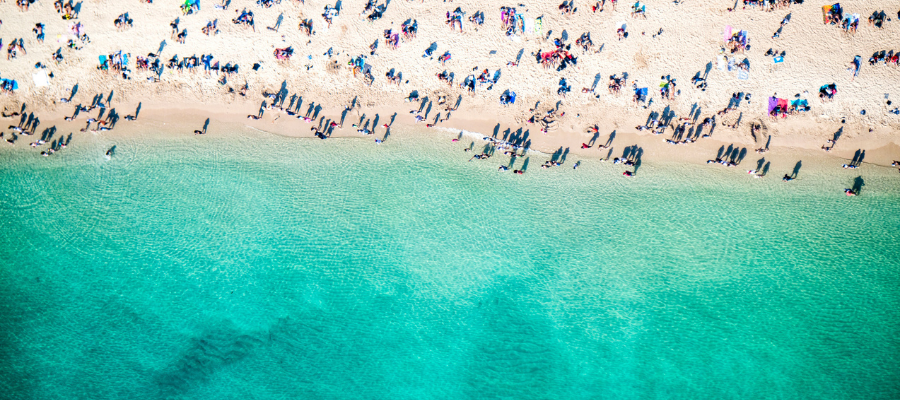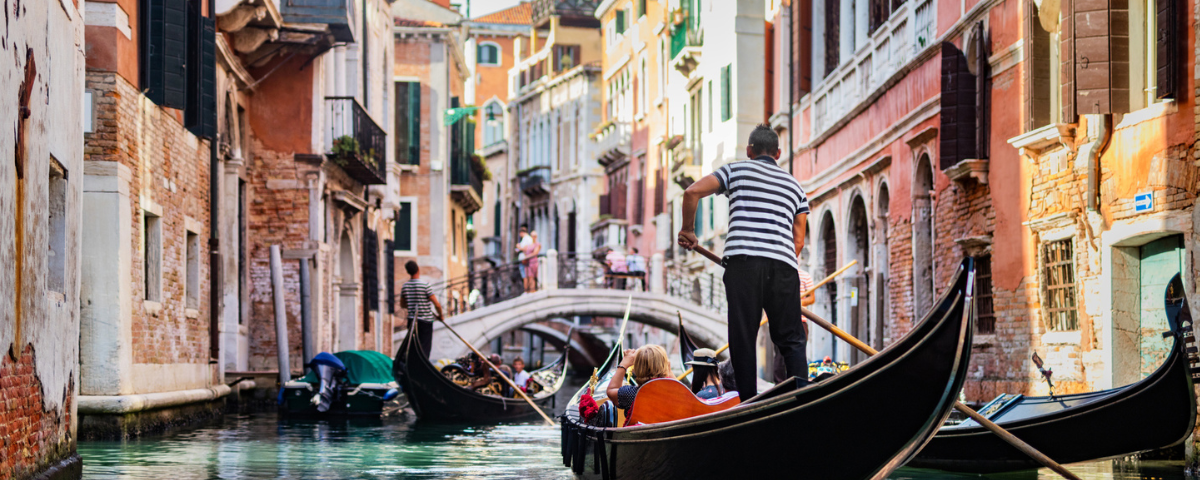The global tourism sector has bounced back vigorously with the UNWTO anticipating the sector’s full recovery by the end of 2024 as remaining pent-up demand is unleashed.
While this is good news for jobs and economic prosperity, it also signals a return to pre-pandemic issues generated by travel’s rapid growth, including overtourism whereby destinations become overwhelmed by large volumes of visitors, resulting in detrimental effects on local communities, cultures, and ecosystems.
Back in 2019, angst over excessive tourism, particularly in Europe, escalated to the point where the UNWTO stepped in and called for “such growth to be managed responsibly so as to best seize the opportunities tourism can generate for communities around the world”.
In 2024, this call to action applies more than ever as overtourism takes hold once again. It highlights the need for governments and travel and tourism stakeholders to find innovative solutions to manage tourism more responsibly to ensure the industry has a positive impact on communities and the environment.
Overtourism defined
Overtourism occurs when a destination cannot cope with the numbers of visitors it receives, explains Ross Bennett-Cook, a tourism researcher and visiting lecturer at London’s Westminster University, speaking to Economic Impact.
“There’s definitely a difference between mass tourism and overtourism,” he says. “Overtourism is more likely to affect destinations that weren’t necessarily designed for tourism: Venice, Dubrovnik, Barcelona. Then there are places like Benidorm and Magaluf that receive masses of visitors, but because they were built for tourism they are prepared for it.”
Overtourism refers to when those living in an area, or those visiting, feel the experience has become worse because of the number of tourists visiting.
For example, the US state of Hawaii, which has a population of around 1.4 million people, attracted around 9.2 million tourists in 2022, according to the islands’ government. Hawaiians have complained that once-pristine beaches are now so busy they are practically unusable.
Amsterdam in the Netherlands is another overtourism victim. The city has an estimated population of around 1.1 million but was visited by around five million tourists in 2022, according to Statista data.
Other tourist hotspots suffering from unbridled tourism growth include Venice, Barcelona, and Machu Picchu, to name a few.

Overtourism drivers and impact
Factors exacerbating overtourism include the proliferation of short-term rental platforms, cruise ship tourism, budget air travel and more recent trends such as ‘set-jetting’, with travellers flocking to destinations featured in movies, TV programmes or series, many of which are not equipped to deal with the influx.
For example, Etretat, a small beach town in northern France with just 1,200 residents witnessed a huge tourism surge after it was featured in the hit Netflix detective series Lupin, attracting up to
10,000 tourists a day during the high season.
“This massive influx ends up trampling and eroding the cliffs and endangers the beach cliffs,” says Shai Mallet, co-head of the Etretat Tomorrow residents’ association.
She also highlights the absence of local economic benefits, with visitors staying just a few hours and buying an ice cream or drink at most, rather than visiting restaurants or staying at hotels.
The impacts of overtourism are far-reaching and multifaceted, affecting both residents and visitors alike. Local communities may experience increased housing prices, displacement, and loss of cultural authenticity as their neighbourhoods become inundated with tourists. Furthermore, overtourism can lead to environmental degradation, pollution, habitat destruction, and strain on fragile ecosystems. Additionally, the quality of the visitor experience may diminish due to overcrowding, long queues, and restricted access to attractions.
Overtourism solutions at a glance
Addressing overtourism requires a comprehensive approach that involves collaboration among governments, tourism authorities, businesses, residents, and visitors. Strategies include:
- Visitor management: Implementing capacity limits and visitor quotas for sensitive sites and attractions; introducing advanced booking systems, timed entry tickets, and crowd control measures to regulate visitor flow; and promoting off-peak travel through incentives such as discounts, special events, and seasonal promotions.
- Diversifying tourism offerings: Encouraging visitors to explore alternative destinations and lesser-known attractions within a region; developing niche tourism products such as ecotourism, cultural tourism, and gastronomic experiences to distribute visitor demand more evenly; and collaborating with local communities to showcase authentic cultural experiences and traditions.
- Sustainable infrastructure development: Investing in sustainable transportation infrastructure, including public transit, cycling networks, and pedestrian-friendly zones; developing smart destination management systems to monitor visitor movements, traffic flows, and environmental indicators in real-time; and retrofitting existing infrastructure to improve energy efficiency, waste management, and water conservation.
- Engaging and empowering local communities: Establishing community-based tourism initiatives that empower residents to participate in tourism planning, decision-making, and benefit sharing; providing education and training programmes to local residents to enhance their hospitality skills, entrepreneurship, and cultural preservation efforts; and creating platforms for dialogue and collaboration between residents, businesses, and tourism stakeholders to address concerns and co-create solutions.
- Promoting responsible visitor behaviour: Educating visitors about responsible travel practices, cultural sensitivity, and environmental conservation through signage, guidebooks, and online platforms; encouraging responsible tourism etiquette, such as respecting local customs, minimising waste, and supporting local businesses and artisans; and enforcing regulations and fines for behaviour that endangers the environment or disrupts community life, such as littering, vandalism, and noise pollution.

Tourism fees take hold
Several destinations are ramping up their strategies to tackle overtourism. Tourism taxes have been widely implemented with stand-out examples including Bhutan, which charges a daily Sustainable Development Fee; Croatia, which ups the fee during peak travel periods; and Amsterdam, in the Netherlands, one of the most expensive, charging 7% of the accommodation price plus a flat rate of
€3 (US$3.25 )per person per night. The city has also introduced measures to limit the number of Airbnb rentals and promote alternative neighbourhoods to visitors while the Dutch government is capping the number of flights at Amsterdam’s Schiphol Airport this year in a bid to reduce noise.
Venice in Italy and Bali in Indonesia are also imposing tourist fees this year and the UK is introducing the new Electronic Travel Authorisation (ETA) system whereby visitors from the US, Europe, Australia and Canada will be required to apply for permission and pay to enter the country.
Similarly, the European Union is implementing a new tourist visa, whereby non-EU citizens travelling from outside the Schengen zone will need to fill out a €7 ($) application to enter the country.
Off-season tactics at play
Encouraging travellers to visit off-peak to avoid overcrowding and more evenly spread economic benefits to local communities is a strategy many destinations are working on. According to the European Commission, promoting tourism during the low season can stimulate economic growth and jobs. It has identified seniors and young people as two major groups that can travel easily during the low season and is engaging all tourism stakeholders in Europe to better engage these markets.
The Maltese islands have made a head start. Blessed with more than 300 days of sunshine annually and hosting a year-round calendar of events, a priority is to encourage travellers to visit outside of the peak summer season, which not only supports communities and stakeholders, but the destination’s focus on responsible tourism.
“Although peak season summer travel drives visitor numbers, it does have an impact on our local people and tourism product,” explains Malta Tourism Authority CEO Carlo Micallef in the World Travel Market London Yearbook 2023.
“Our vision is to reduce the seasonality of travel from all of our markets as this offers visitors the chance to see the archipelago in a different light. This also feeds into our responsible travel vision to ensure that our tourism product has a limited environmental impact on our islands.”
Q1 of 2023, considered off-peak, was Malta’s best quarter to date, with visitor arrivals up 10% on Q1 of 2019, proving the seasonality strategy is starting to pay dividends.
Promoting lesser-known destinations and ‘dupes’
Diverting travellers from hotspots to lesser-known destinations to distribute visitation and economic benefits is another tactic. The UNWTO promoted this at September’s World Tourism Day 2023 in Riyadh where it launched the ‘Tourism Opens Minds’ campaign. Delegates in attendance were presented with a special Pledge calling on them to actively work to promote new and under-appreciated destinations.
A recent YouGov survey unearthed visitor reticence to visit new places. It found 66% of tourists believe travelling to a place that provides familiarity is important and just under half of respondents feel uncomfortable travelling to places they know little about.
This is despite the fact that, of those that do travel to new destinations, 83% agree that they come back with a changed or broadened perspective.
UNWTO says the data highlights the need for initiatives such as ‘Tourism Open Minds’ to encourage consumers to diversify their travel habits.
“To ensure true global prosperity, we must work together to ensure that every country can harness the potential of a thriving tourism industry,” says UNWTO Secretary-General Zurab Pololikashvili.
“The sector serves as a unifying force, fostering cultural understanding, strengthening bonds between societies, and championing environmental preservation.”
Fortunately, a new trend for 2024 is the ‘destination dupe’ – alterative destinations replacing popular ones that are expensive and overcrowded, according to an Expedia report. It highlights examples, with Taipei a dupe for Seoul, and Pattaya for Bangkok.
Similarly Ljubljana in Slovenia with is jade-coloured waters is a dupe for Italy’s Venice; the Jordan Trail with its 400-mile trek replaces the Pacific Crest Trail, made famous by Reese Witherspoon’s character in Wild; and Bosnia and Herzegovina is being touted as a Dubrovnik alternative.
For under-promoted destinations looking to boost their profile as dupes, engaging influencers could be the answer – after all, they are the ones who originally made the ‘dupe’ concept famous on TikTok.

And lastly…going rural
Dupes also tap into traveller desire to explore the unknown and so rural areas, off-the-beaten track locales, and attractions of cultural significance revived, all appeal, as Morocco has recognised.
Understanding the power of tourism to boost economic and social development and improve the living conditions for the entire Moroccan population, His Majesty King Mohammed VI, Morocco, has spearheaded several initiatives to revive the country’s ancient medinas.
The promotion of the medina as a tourist product creates profit centres for local people spanning accommodation, catering and services and offers visitors an authentic experience.
Similarly, in the mountains, new tourism experiences created such as hiking, sports, yoga, cooking classes, agrotourism, fruit picking and wellness retreats, capitalise on the emerging ‘transformational travel’ movement discussed in my recent WTM blog and provide much-needed income for local families.
Tackling overtourism is an opportunity
Destinations that successfully tackle overtourism are enriching the lives of the visitor and the visited – in other words it’s a matter of responsible tourism. It calls for all stakeholders to play their role, from governments and their public and private sector partners to local residents and the travellers who visit. This holistic approach can move tourism away from the model of ravaging destinations for all they are worth to restricting and regenerating the over-visited and reviving the restoring the under-visited. Dispersing travellers and therefore wealth, jobs and impact is the only way forward for travel and tourism’s long-term sustainability.
Discover more at Arabian Travel Market Dubai
The market leading travel and tourism event brings the whole world together in Dubai, UAE.
Join us from 28 Apr – 1st May at Dubai World Trade Centre.


